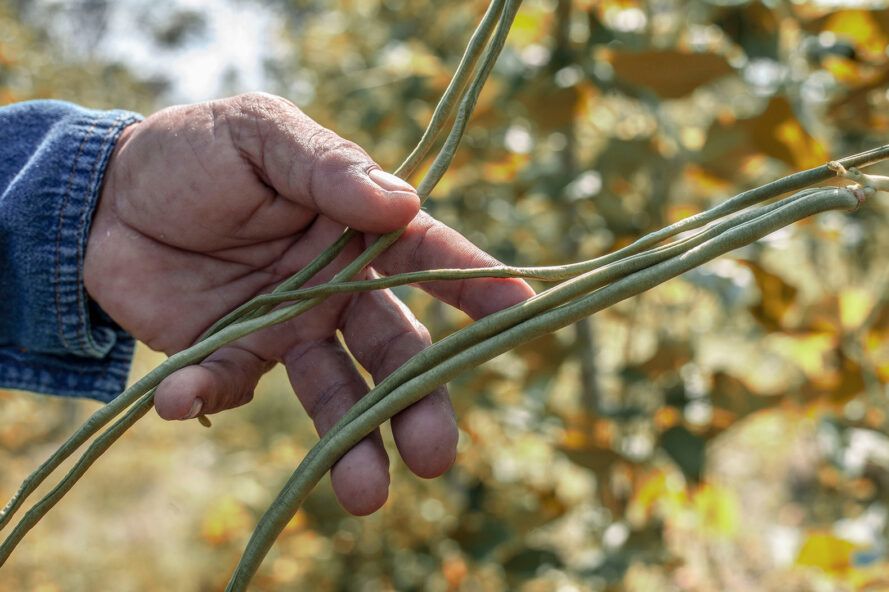
6 plant sources to feed the world in the future
The world is getting hotter. Inasmuch, having enough water is a critical concern. So is growing food while dealing with water restrictions and limitations. The future of the food chain depends on efficiency, and that means choosing crops carefully based on available land, water and other resources.
Continue reading below
Our Featured Videos
The types of foods being farmed over the centuries have changed significantly. Often looking back in time can also help us forecast the success of foods for the future. By looking at traditional plants and considering new options, we can reevaluate what crops we invest in to ensure the highest chance of future food success.

Cowpea
Anticipating the needs of a population faced with limited usable agricultural land and changing temperatures means looking to areas of the world already faced with diverse climates. Crops that do well in the heat of Africa, for example, may be a quality choice to invest in further north.
Cowpea, also known as black-eyed pea, is a prime example. Grown on small farms across western Africa and South America, cowpea is drought tolerant. Once established, the seeds require very little water to grow. The entire plant is edible too, although historically humans have primarily consumed the seeds or beans.
It’s a crop that could also do well in North America as we look for options to replace the ubiquitous and water-consumptive wheat and corn. In fact, 80 years ago, cowpea was a common crop in the U.S., although it was used as animal feed more than human food.

Chia
Chia harvests date back to the Aztec era in Central America, where it’s seeing a resurgence in popularity today. The plants grow well in hot, dry climates, yet provide high nutrition as seeds, flour or oil.
Seeds turned gelatinous when mixed with liquid, making them a healthy addition to smoothies or as a cereal substance. Chia sprouts can also be added to salads and sandwiches as a fresh green. Once established, chia spreads quickly, sometimes earning a title as invasive in the backyard garden. When trying to feed a population, this trait may be just what we need.

Amaranth
Every part of the amaranth plant is edible, making it a top-runner in the race to feed the world high-quality foods with less than ideal soil to work with. Ancient peoples across Africa and Asia have long-relied on amaranth as a vegetable staple. Native Americans also have a long history with the seeds, which can be prepared as a grain similar to quinoa.
In addition to being a versatile source of food for sauteing, stir frys and toasted seeds, amaranth is a complete source of protein. It is packed with vital nutrients, giving it the edge in the plan for a balanced edible outlook.

Fonio
Fonio is another millet, and a long-standing example of a crop that thrives in less than ideal conditions. Widely grown across West Africa for generations, fonio is one of the oldest cultivated crops known to grow in the region. It’s mentioned as a ceremonial food going back thousands of years. As a modern crop, it offers a harvest when faced with drought and poor soil quality. It’s also naturally gluten-free, boosting its importance for the diabetic and gluten-intolerant communities.

Spineless cactus pear
Research is under way to delve into the potential of cactus pear as a viable plant in areas outside its native region. A five-year study by teams at University’s College of Agriculture, Biotechnology and Natural Resources showed the cactus is as effective as corn and sugarcane as a bioenergy crop. However, it can tolerate higher growing temperatures and uses three to six times less water to grow.
Humans can ingest the plant raw or can it for later use. Cactus pear is also a food source for livestock due to the high water content. Scientists are identifying the genes in the cactus pear that allow it to adapt to high temperatures while conserving moisture, with the intent of increasing drought tolerance in other types of plants.

Taro
It’s not a new crop, giving it a foundation as a versatile source of food historically and present day. Polynesians and Asians have long-grown taro as a root crop. It’s harvested and cooked in ways similar to a potato. Taro is a tropical crop, but with some adaptation scientists think it could reliably be grown in more temperate regions of the U.S. With its long history, taro has deep roots in many cultures, providing an array of useful cooking options that have stood the test of time.
Engineered crops
The future of food is reliant on action now. Identifying those crops that are promising options for feeding the world is an important step. Engineering crops will likely also play a key role. Regardless of opinions on genetically-modified plants, there’s no doubt that contouring current varieties into plants better equipped to handle climate change is a viable way to increase food supplies with less reliance on limited resources like water and nutrient-rich soil. It’s not the only answer, but it’s part of a lengthening equation that still doesn’t have a concrete answer.
Via Nevada Today, Reuters
